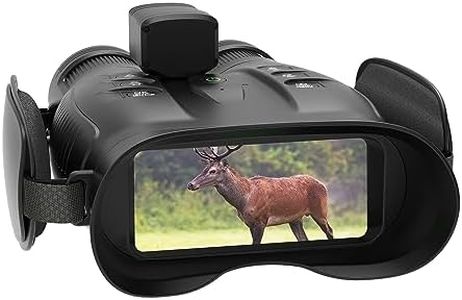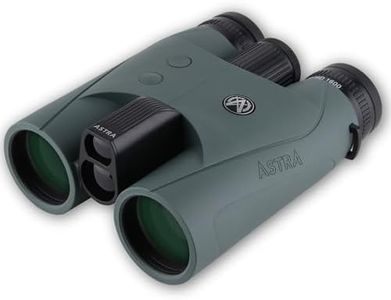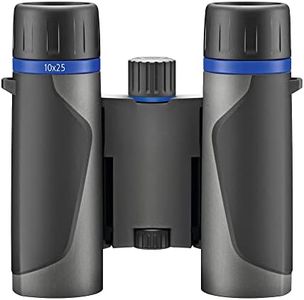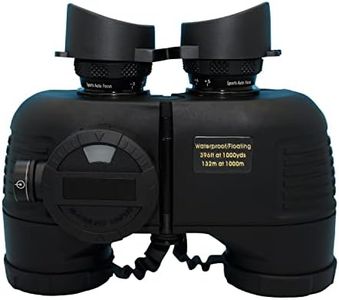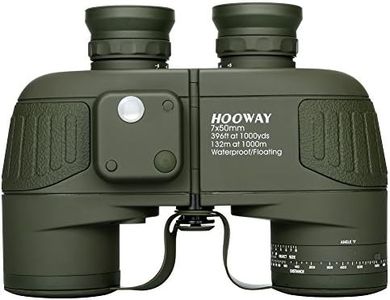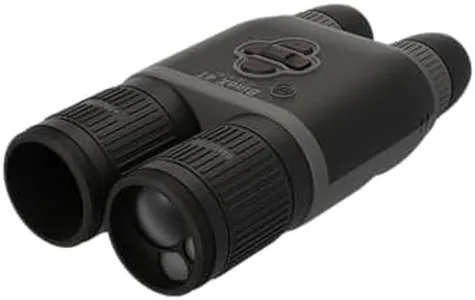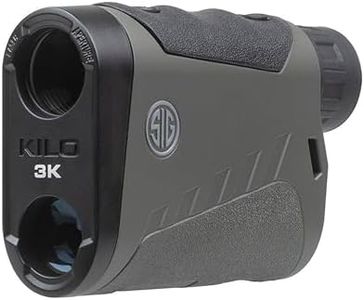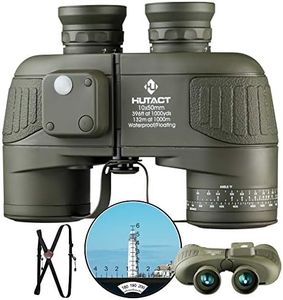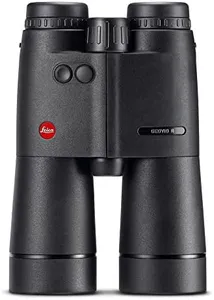We Use CookiesWe use cookies to enhance the security, performance,
functionality and for analytical and promotional activities. By continuing to browse this site you
are agreeing to our privacy policy
10 Best Rangefinder Binoculars
From leading brands and best sellers available on the web.Buying Guide for the Best Rangefinder Binoculars
Choosing the right rangefinder binoculars can greatly enhance your experience in activities like birdwatching, hunting, golfing, or hiking. These devices combine the magnification of standard binoculars with the ability to measure distance to objects, providing you with a versatile tool. To make an informed choice, you'll want to consider how you'll use them most—do you need quick, reliable distance readings in the field, or are you more focused on detailed observation? Considering your typical conditions and priorities will help guide you to a pair that fits your needs comfortably, ensuring the right balance between features and ease of use.Magnification and Objective Lens DiameterMagnification (like 8x or 10x) tells you how much closer an object appears, while the objective lens diameter (in mm) affects how much light the binoculars gather, influencing image clarity and brightness. Higher magnification gives a closer view but can make the image shakier and the field of view narrower, while larger lenses let in more light but make the device heavier. If you plan to observe at long distances in low light, look for higher magnification and bigger objective lenses. For general use and portability, moderate specs (like 8x42) often provide a good balance.
Rangefinding CapabilityThis refers to how accurately and how far the binoculars can measure distance. The maximum range tells you the farthest distance the device can read, usually in yards or meters. More advanced models have longer ranges, which is helpful if you need to measure distances to distant animals, targets, or landmarks. For most outdoor users, a reliable rangefinder that covers your typical maximum distance (like 1,000-2,000 yards/meters) is sufficient, but if you require long-range measurement for specific tasks, look for appropriately rated devices.
Field of View (FOV)Field of view describes the width of the area you can see at a certain distance, usually measured in feet at 1,000 yards or meters at 1,000 meters. A wider field of view means you can see more of the landscape at once, which is helpful for tracking moving animals or scanning broad areas. However, higher magnification often reduces FOV. If you do a lot of scanning or fast-moving target observation, pick a pair with a wider field; for detailed observation at long distances, a narrower field may be okay.
Size and WeightThe physical size and weight of the binoculars affect how comfortable they are to carry and use. Heavier and bulkier models may provide better optics and features, but they can become tiring to hold during long sessions. If you hike or travel extensively, lightweight and compact models may suit you better; if you use them mainly from a stationary position, like in a hunting blind, heavier models might be acceptable.
Laser Type and SafetyRangefinder binoculars use a laser to measure distance, and the type and class of the laser relate to its safety and performance. Most consumer models use eye-safe Class 1 lasers, which are safe for brief accidental exposure. It’s important to ensure your binoculars use a safe laser, especially if children may use them. Laser reliability in different weather conditions (like fog or rain) also varies, so check how the device performs in the environments you often encounter.
Weather ResistanceWeather resistance includes protection against water, fog, and dust. Look for terms like waterproof, fog-proof, and rubber armor, which mean the binoculars are sealed and protected against the elements. If you frequently use your gear outdoors in varying conditions, opt for binoculars with solid waterproof and fog-proof ratings, which will keep them functioning properly over time.
Display Type and ReadabilityRangefinder binoculars display distance readings, usually inside the eyepiece. The clarity, brightness, and visibility of this display in different lighting conditions (bright sun, low light) can affect how quickly and easily you read distances. Some displays have adjustable brightness or illuminated readouts to enhance usability. If you anticipate using the binoculars in lots of sunlight or at dawn/dusk, consider models with easily readable and adjustable displays.
Ease of Use and ControlsThe layout and design of the controls—like buttons for focus, settings, and measurement—determine how easy it is to operate the device, especially when wearing gloves or working quickly. Simple, well-placed controls make it easier to use the binoculars efficiently. If you need to react quickly or often use the rangefinder in challenging conditions, prioritize straightforward controls and consider testing how they feel in hand if possible.
